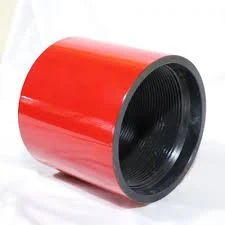- Afrikaans
- Albanian
- Amharic
- Arabic
- Armenian
- Azerbaijani
- Basque
- Belarusian
- Bengali
- Bosnian
- Bulgarian
- Catalan
- Cebuano
- Corsican
- Croatian
- Czech
- Danish
- Dutch
- English
- Esperanto
- Estonian
- Finnish
- French
- Frisian
- Galician
- Georgian
- German
- Greek
- Gujarati
- Haitian Creole
- hausa
- hawaiian
- Hebrew
- Hindi
- Miao
- Hungarian
- Icelandic
- igbo
- Indonesian
- irish
- Italian
- Japanese
- Javanese
- Kannada
- kazakh
- Khmer
- Rwandese
- Korean
- Kurdish
- Kyrgyz
- Lao
- Latin
- Latvian
- Lithuanian
- Luxembourgish
- Macedonian
- Malgashi
- Malay
- Malayalam
- Maltese
- Maori
- Marathi
- Mongolian
- Myanmar
- Nepali
- Norwegian
- Norwegian
- Occitan
- Pashto
- Persian
- Polish
- Portuguese
- Punjabi
- Romanian
- Russian
- Samoan
- Scottish Gaelic
- Serbian
- Sesotho
- Shona
- Sindhi
- Sinhala
- Slovak
- Slovenian
- Somali
- Spanish
- Sundanese
- Swahili
- Swedish
- Tagalog
- Tajik
- Tamil
- Tatar
- Telugu
- Thai
- Turkish
- Turkmen
- Ukrainian
- Urdu
- Uighur
- Uzbek
- Vietnamese
- Welsh
- Bantu
- Yiddish
- Yoruba
- Zulu
Understanding Coupling Tube Fittings for Optimal Connection Solutions in Various Applications
The Importance of Coupling Tube Fittings in Modern Engineering
In the realm of engineering, the importance of efficient and reliable connections cannot be overstated. Among the various types of connectors available, coupling tube fittings play a crucial role in ensuring the integrity of fluid systems. These fittings are essential components that facilitate the joining of pipes or tubes, allowing for the seamless transfer of fluids or gases in a variety of applications.
Coupling tube fittings are designed to create a secure connection between two tubing ends, serving as a bridge that holds them together. They are typically used in hydraulic systems, pneumatic systems, and various industrial applications. The primary function of these fittings is to prevent leaks, maintain pressure, and ensure the safe passage of liquids or gases. This reliability is especially critical in systems where any compromise could lead to catastrophic results or significant downtime.
One of the key advantages of coupling tube fittings is their versatility. They come in various materials, such as stainless steel, brass, and plastic, making them suitable for different operational environments. Stainless steel fittings, for example, offer excellent corrosion resistance and strength, making them ideal for harsh chemical applications. Conversely, plastic fittings may be lighter and more cost-effective for less demanding tasks.
coupling tube fitting

The installation process of coupling tube fittings is designed to be straightforward, which is a significant advantage for engineers and technicians
. These fittings usually employ a threaded, compression, or push-to-connect design that simplifies the assembly process. As a result, maintenance and replacement tasks can be carried out quickly, helping to minimize downtime and improve overall system efficiency.Moreover, the integration of coupling tube fittings in design and manufacturing processes enhances the adaptability of systems to changing requirements. In many industries, flexibility is paramount, as operational needs can evolve over time. With coupling tube fittings, engineers can easily modify existing systems or expand operations without the need for extensive redesign efforts.
Choosing the right coupling tube fitting is crucial for performance optimization. Factors such as the type of fluid being transported, temperature, pressure ratings, and compatibility with existing components must be considered. Using the wrong fitting can result in leaks, weak connections, and ultimately system failures. Therefore, investing time in selecting the appropriate coupling tube fitting is essential for long-term reliability and safety.
In conclusion, coupling tube fittings are integral to modern engineering solutions. Their ability to ensure efficient fluid transfer, adaptability to various materials and environments, and ease of installation and maintenance make them indispensable in countless applications. As industries continue to evolve, the reliance on these fittings will only grow, highlighting their fundamental role in achieving safe and efficient engineering designs. Whether in the manufacturing, automotive, or aerospace sectors, coupling tube fittings will remain a cornerstone of fluid system connectivity, proving that the simplest components can have the most significant impacts.
-
Tubing Pup Joints: Essential Components for Oil and Gas OperationsNewsJul.10,2025
-
Pup Joints: Essential Components for Reliable Drilling OperationsNewsJul.10,2025
-
Pipe Couplings: Connecting Your World EfficientlyNewsJul.10,2025
-
Mastering Oilfield Operations with Quality Tubing and CasingNewsJul.10,2025
-
High-Quality Casing Couplings for Every NeedNewsJul.10,2025
-
Boost Your Drilling Efficiency with Premium Crossover Tools & Seating NipplesNewsJul.10,2025







